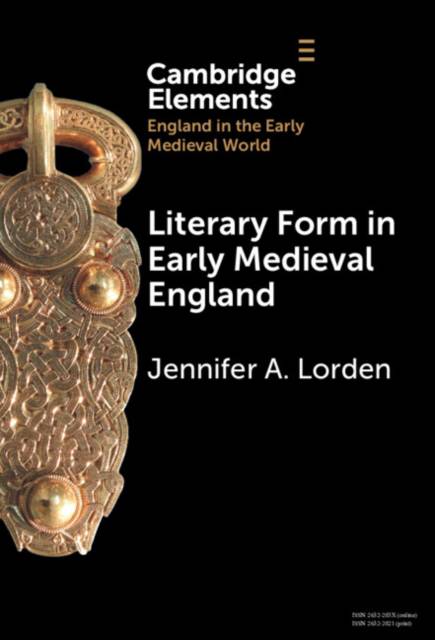
- Afhalen na 1 uur in een winkel met voorraad
- Gratis thuislevering in België vanaf € 30
- Ruim aanbod met 7 miljoen producten
- Afhalen na 1 uur in een winkel met voorraad
- Gratis thuislevering in België vanaf € 30
- Ruim aanbod met 7 miljoen producten
Zoeken
Omschrijving
The earliest English writers left little comment on their literary forms. In contrast to the grammatical treatises of late antiquity or critical studies of contemporary and modern literature, early medieval English writing offers only sparse contemporaneous self-commentary, often in brief or conventional notes along the way to other things. But Old English and Latin literature had lively and evolving practices of literary form and formal innovation. Literary Form in Early Medieval England examines both more and lesser known forms, considering the multilingual landscape of early medieval England and showing that Old English literary forms do not simply end with the rupture of the Norman Conquest but continue in surprising ways. Literary Form in Early Medieval England offers a concise tour of what we do know of literary forms, both those that have received more attention and those that have been relatively overlooked, across the first six centuries of English literature.
Specificaties
Betrokkenen
- Auteur(s):
- Uitgeverij:
Inhoud
- Aantal bladzijden:
- 76
- Taal:
- Engels
- Reeks:
Eigenschappen
- Productcode (EAN):
- 9781009663281
- Verschijningsdatum:
- 8/05/2025
- Uitvoering:
- Hardcover
- Formaat:
- Genaaid
- Afmetingen:
- 152 mm x 229 mm
- Gewicht:
- 276 g

Alleen bij Standaard Boekhandel
+ 209 punten op je klantenkaart van Standaard Boekhandel
Beoordelingen
We publiceren alleen reviews die voldoen aan de voorwaarden voor reviews. Bekijk onze voorwaarden voor reviews.








